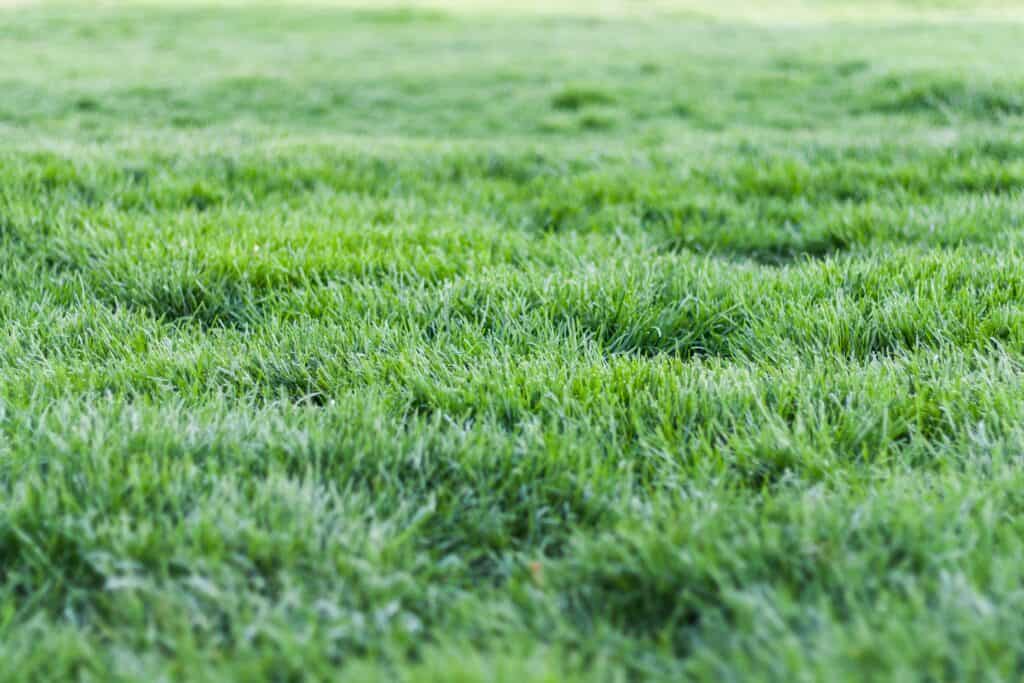Table of Contents
Keeping your lawn healthy and well-maintained is essential for enhancing your home’s curb appeal and providing a safe and enjoyable outdoor space for your family. One of the most important tasks in lawn maintenance is mowing, but how often should you do it? Let’s take a closer look at the factors that affect lawn mowing frequency, tips for effective mowing, and how to manage grass clippings.

Factors Affecting Lawn Mowing Frequency
Several factors can influence how often you should mow your lawn. Some of these factors include:
Grass type
Different grass varieties have different growth rates, with some requiring more frequent mowing than others. For example, Kentucky bluegrass and Bermuda grass generally require more frequent mowing than fescue or ryegrass.

Season and weather conditions
Lawn growth rates can also vary depending on the season, with spring and summer generally requiring more frequent mowing than fall and winter. Warmer weather and frequent rainfall can also lead to faster grass growth, meaning more frequent mowing may be necessary.
How often do you mow your lawn in the spring?
In the spring, you may need to mow your lawn once per week as the weather warms up and grass begins to grow at a faster rate.
How often do you mow your lawn in the summer?
In the summer, you may need to mow your lawn every five to seven days, especially if there is a lot of rainfall or the weather is particularly warm.
How often do you mow your lawn in the fall?
In the fall, you may be able to cut back on mowing to once every 10 days to two weeks as the weather cools down and grass growth slows. This is also the season when fallen leaves can pile up on your lawn and cause issues with airflow and sunlight. With the EcoFlow BLADE, you can conveniently mow and clean fallen leaves from your lawn at the same time, making fall lawn care a breeze. The blade’s unique airflow design lifts up leaves and discharges them to the side, leaving your lawn looking neat and tidy in no time.

How often do you mow your lawn in the winter?
In the winter, grass growth typically slows to a near stop, so mowing is generally not necessary.
Lawn watering and fertilization practices
Watering and fertilization can also impact how often you need to mow your lawn. If you water and fertilize your lawn regularly, it can lead to more rapid grass growth and more frequent mowing needs.
Mower type and blade sharpness
The type of mower you use and the sharpness of its blades can impact how often you need to mow your lawn. A dull blade can tear the grass rather than cutting it cleanly, leading to a less healthy lawn and the need for more frequent mowing.
Tips for Effective Lawn Mowing
When it comes to mowing your lawn, there are a few tips you can keep in mind to ensure that you’re doing it effectively:
- Keep your lawn mower blades sharp
- Mow in the early morning or late afternoon to avoid the heat of the day
- Mow when the grass is dry
- Avoid cutting the grass too short, as this can damage the lawn
- Change your mowing pattern frequently to avoid creating ruts or bald spots in your lawn
Common Mistakes to Avoid When Mowing Your Lawn
While mowing your lawn seems like a straightforward task, there are some common mistakes that you should avoid. These include:
- Mowing the lawn too short
- Waiting too long between mowing sessions
- Mowing in the heat of the day
- Mowing with dull blades
How to Manage Grass Clippings
Grass clippings can be a valuable resource for your lawn, garden, and the environment. You can either compost your clippings or leave them on your lawn as a natural fertilizer. If you’re tired of dealing with grass clippings, you may want to consider investing in an automatic lawn mower like EcoFlow BLADE. Blade can navigate your yard and maintain a perfectly manicured lawn without leaving behind grass clippings.
Conclusion
By following these guidelines for mowing your lawn and managing grass clippings, you can maintain a healthy and attractive lawn that enhances the look and feel of your home. Pay attention to the factors that affect lawn mowing frequency, keep your equipment in good condition, and use Blade to make lawn care easier and more efficient. With a little bit of effort and know-how, you can enjoy a beautiful lawn all year round.
FAQs
In the summer, you should mow your lawn every five to seven days, depending on how quickly the grass is growing. This may be more frequent if there is a lot of rainfall or high temperatures.
The best time of day to mow your lawn is in the early morning or late afternoon when the temperature is cooler and the sun is not as intense. Avoid mowing in the heat of the day when the grass is stressed and more susceptible to damage.
Mowing your lawn too often can be harmful because it can damage the grass and lead to a less healthy lawn. However, mowing too infrequently can also be problematic because it can cause the grass to become too long and attract pests and diseases.
You can either compost your grass clippings or leave them on your lawn as a natural fertilizer. You can also collect them in a bag and dispose of them through your local yard waste program.
If your lawn mower is leaving uneven cuts on your grass or is struggling to cut through the grass, it may be time to sharpen the blades. You can also inspect the blades for nicks and wear that can affect its cutting ability.
